Only few people know anything about Estonia and even fewer know that the country is full of beautiful, clean, undisturbed rivers with wild brown trout.
Estonia is a former Soviet Union country which is more and more discovered by tourists nowadays. Although Tallinn is a modern city and country GDP growth was one of highest in Europe last year, pure nature and culture and heritage is well preserved. As soon as you leave the city you can see beautiful nature, countryside and welcoming locals.
In Europe, only few people know anything about this country and even fewer know that here are beautiful rivers with wild brown trout.
The Estonian tourism board's slogan is something like: One country, many stories.
I guess that applies for fishing too. Some experienced foreign fly fishermen say that some Estonian rivers are the most beautiful ones in Europe, others tell stories about their biggest brown trout, which is caught in Estonia and some say that fishing here is too complicated to come.
I don't who's right. Maybe all of them. But at least I truly enjoy fishing here, although I have been fishing in the Balkans, in Russia and even in New Zealand.
One country, many stories.
Small in form, but it is rich in content
We Estonians like to say that our county may be small in form, but it is rich in content. That means that in this small country you can find wild and pure nature, our historical folklore, luxurious manor houses, the best protected and intact medieval cities in Europe and much more.
Estonia is a fast growing information technology country, as many people like to say, but as soon as you left Tallinn, you can find gravel roads, old farms and small local shops and pubs.
One hour
Within one hour from the sizzling city life you will find wild trout waters.
There are several untouched fishing territories in Europe, but Estonia is unique in a way that most countries aren't. It takes only one hour driving from the center of the capital Tallinn to the fishing waters where you will find wild brown trout, bear trails and rarely see any other fishermen.
Wild nature is not so rare in Europe, but finding wild nature so close to a civilization is unique.
Estonia is as big as the Netherlands, but the population is ten times smaller. 50% of the country's territory is covered by forests, it has 7000 rivers and streams and one fifth of the country is covered with bogs and wooded swamplands. So you can imagine how such a countryside looks!
Brown trout
Estonia has a lot to offer for different kinds of fishermen, but brown trout is the reason why most people come here. You can find brown trout in more than 100 hundred rivers and streams, and in most of them, the trout is wild. The fish is very selective, shy and strong.
This is the reason that I call Estonia an advanced fly fisherman's fishing destination. This isn't the spot for everybody. Being successful requires good skills, patience and endurance. Often you have to walk one hour to get to the best rivers.
If the fisherman meets these criteria, he will most probably enjoy fishing in Estonia.
When to come
The main season for brown trout fishing begins in May and lasts till 15th of September when closed season for trout starts. Fishing is possible already in April or even March, but during this time waters are mostly high and the weather isn't very fisherman friendly. Heavy snow in the beginning of April isn't rare.
When you come in May, the weather is nice, nature is blooming and trout are getting more and more active.
The peak in the brown trout fishing is the mayfly hatch. This is the most eagerly awaited period in the season. During the time of the big hatch, fish go crazy. For Estonian fishermen this time is so important because in most rivers big fish don't eat in the surface outside of this period (of course we have exceptions). The mayflies turn even 2 kilo or 4 lbs. predators into fly chasers.
July is our hottest month, but still it can offer some very good fishing. Smaller to mid-size fish are very active in the rapids and big fish come out in the late evening to eat caddis flies or will take streamers in the early morning.
Actually this is my favorite time. Fishing in complete darkness with a large Goddard Caddis when you hear loud splashes all around you is a very thrilling experience. In a peak time something might happen in every cast, and you have chances of catching a very large trout.
Rivers
Most of the rivers are small to mid-size. In countries they would probably even be called streams.
The two best fishing zones are northeast and middle-Estonia.
In the first region, rivers are mainly swamp fed with slightly dark color. Due to that, fishing is mostly blind. Rivers vary from fast running to slow and deep. In the rapids you can also find grayling besides small to mid-size trout.
The trout is typically up to 38 cm and grayling up to 35 cm (13-15 inches). Bigger fish hold in deeper stretches where they swim near the bottom and usually only takes streamers and nymphs. In such stretches fish can be up to 50 centimeters (20 inches) or even more. Usually they are around 40 centimeters or some 15-16 inches.
Rivers are surrounded with big forests and sometimes flow through fields.
In middle-Estonia the rivers are spring fed with crystal clear water. There are fewer rapids and the rivers are deeper. Rivers are mostly located between big swamps. This means long hikes, but that again means that you can fish in pure wilderness and usually you don't meet other fishermen.
Due to the fact that the water is so clear, fish are very selective and shy. If you learn how to fish in such conditions, you can get big fish in good quantities. Usually the fish are up to 45 centimeters or 17-18 inches, but some fly fishermen have caught brown trout weighing more than 3 kilos or 6 lbs. In these rivers. The diet in these rivers is different than in north-Estonia. The fish are more into dry flies and you can see big trout in the surface even when there isn't any particular hatch going on.
Keys to success
Walking and reaching to the water.
Legendary Estonian brown trout fisherman R. Allpere said "You can't walk like a group of elephants on the river bank". With that he actually meant that you can't do your regular walking step. Estonian river sides are very often soft and springy. If you don't want to disturb the fish, sneak. Too heavy steps and the fish are gone even from 20 meters away.
Hiding
Witness the description by the same legendary fishermen R. Allpere in one of our brown trout streams: "I didn't see him and I didn't know that there was someone, only his flashing glasses in the bush betrayed him in the end. He was there so quietly and in that day he was the only one who got the fish."
Presentation
In the spring fed rivers you have only one cast. If the line splashes to the water or you are not accurate enough and the fish is gone. In swamp-fed rivers, big fish are on the bottom of deep pools. If your streamer or nymph doesn't reach deep enough, you might not get anything.
In many fishing destinations you don't need to think about your movement. The ground is strong and rocky. The same goes for hiding. The rivers are wide and you are in the same level as the river, so the fish don't see you.
Estonian rivers are small and the banks are often higher than the water level. If you walk briskly to the bank of the river and start casting to 5-10 meter distance, you won't ever get a big fish.
Surrounding nature and landscape
The big forests and wetlands of Estonia hide more than 600 brown bears, 200 wolves and 1000 lynx. While fishing, beavers are regularly seen, roe deer or fox are often on the fields in the early mornings and seeing a bear, wild boar or a moose trail on the river bank is common.
Nature is clean and well preserved. An Estonian fishermen takes his drinking water from a river and eating different kinds of berries or mushrooms in a forest is common.
The landscape of Estonia is mostly plain, in terms of most countries; Estonia is completely flat with its highest "mountain" Munamägi being 318 meters or just about 1000'.
The biggest treasures of Estonian nature are the bogs, a beautiful coastal line with more than 1500 islands and our forest with good population of animals.
The main event for Estonian fly fishermen: The mayfly hatch!
Two stories to show Estonian fishing reality
The main event for Estonian fly fishermen: The mayfly hatch.
The best rivers for fly fishing when the mayfly are hatching are situated in north-Estonia.
The period is very short, in some years even just 3-4 days. After that, the mayfly might still be out, but only few fish are in the surface. On the other hand that means that in first few days, fish are crazy.
That's why timing is a key factor and usually I start observing conditions in a last week of May. In the first river, the hatch takes place in first week of June. In different rivers you can enjoy mayfly hatches from the beginning of June till midsummer's day. Many fly fishermen take the best out of this period and really fish every day.
Maybe you remember that in one sentence I mentioned that in north-Estonian rivers brown trout aren't very much into dry flies. It's very true and in most rivers outside of the mayfly hatch you see only small to mid-size fish in the surface.
It's very hard to believe, but in my favorite stretch, fish are almost everywhere when the big hatch is on, but when you go there in regular times it feels like a dead river. You might get few, but mostly you don't even see a fish. Fish don't rise for the mayfly on this stretch, it's always there.
But this river is full of nutrition and probably fish are sitting the whole year under the banks because all that they need flows right to their mouths. But big fat mayflies bring them out.
The mayfly hatch
One of my best memories from mayfly hatch is from 2010
It was our third day at the river. I was together with my good friend Erki and we were camping on the river bank as we always do. Usually the weather is very warm and nice in first week of June. This can be the basis for a good hatch, but not in this year. The weather was chilly and windy and we had poor fishing on first two days. There just weren't enough mayflies to bring big fish to the surface.
It was around 21:00 when we both thought that nothing particular would happen on this day. So our mood was down and we already thought about calling it a day and opening a bottle of vodka. In that instant the wind calmed down and we felt that the temperature rose a little. I remember how I went from frustration to real confusion.
One moment I was sitting waiting for fish to rise and few minutes later, the air was suddenly full of mayflies.
I mean, I have never seen so many of them!
It felt like all of them had held themselves back for the last couple of days and now they all decided to hatch. The fish went crazy and they were everywhere. I remember how I shouted to Erki "Come here, there are at least 4-5 big fish!". He shouted back "No, there are even more here!". It lasted less than two hours, because after sunset the temperature dropped, but it was one of the most intensive fly fishing experiences that I have ever had.
Among others, I caught my summer trophy. It was beautiful 1.8 kg female - almost 4 lbs.
Matching the Caddis hatch
July is the hottest month of Estonia and if you fish during the daytime or in the early evening, you might say that trout is not feeding at all because of the hot weather.
This is what many fishermen think, but if you go to the river in the late evening or even at night, you can hear big trout feeding in the surface - this is the time for caddis.
I truly love this period of summer. The weather is warm and nice all day long; you rarely see any other fishermen on the river because most of them are tench fishing or at the beach, and you have a chance of hooking a trophy trout on a dry fly.
My favorite zone during this time is middle-Estonia. The Järvamaa county in Estonian. I described the fishing conditions above. I'll describe it again with few words: fishing is complicated, away from everything, but in the same time truly enjoyable.
The rivers are flowing in a real wilderness, between big forests and swamps. This freedom and loneliness doesn't come easily. It requires quite a big physical effort. The best stretches are often in 1 hour walking distance through hard landscapes. You need to cross small swamp creeks, jump over beaver holes and walk on soft and bouncing ground, which is caused by water below the ground.
Late July last year
It's a hot summer day, around 30 degrees Centigrade. I must be crazy when I'm thinking about wearing waders in a shadowless swamp instead of swimming trousers at the beach, but there isn't anything to do. The caddis is hatching!
I put the fishing tackle and a box with big fat caddis flies in the back of my truck and head to the river. Half an hour on a highway and the other half on a dusty countryside gravel road. I wouldn't want to be the guy with the bicycle whom I just passed by. The flying dust is like a big cloud behind my car.
At 19:00 I am in my regular "parking lot". My car is the only one there as usual.
There is still time, so I don't rush. Maybe I should, but the idea of walking in waders in the heat for one hour doesn't seem so delightful.
One hour walking and I'm by my favorite stretch. After jumping to the river and getting a big mouthful of cold river water I look around.
It's about 9 PM and the sun is still rather high. I see some rings on the surface and everything seems promising. Smaller to medium size fish are feeding on terrestrials. I tie my parachute black gnat on and try to catch some of them. During the daytime it is very complicated to catch something from here because water is so clear. I use very thin leaders, dull colored lines and perfectly tied patterns. With very light casts and crawling on the river bank I get fish even during the brightest time of a day.
Nothing remarkable happens before the evening. I see a few bigger fishes swimming by, but I only catch a few smaller ones, which were around 30 centimeters.
Finally the sun is behind the forest and the temperature goes down a little. I hear a few more splashes in the water already, but there's still half an hour until the real action.
I tie on my 10# Goddard Caddis, in my opinion the most effective night fly ever made. This fly is most effective when you strip and vibrate it on the water. It is really thrilling when a brown trout suddenly rushes towards the striping fly. Very often a strong splash follows.
It's 11:30 PM and it's completely dark. I can see the contour of the river, but that's all. A head-lamp is the only option for walking and fly changing.
I must be crazy!
I'm around 8 kilometers from my car, its complete darkness, and I have bigger chance of meeting a bear than another human being. Luckily there isn't usually very much time for that kind of thoughts, so I deal with that when I need to go back.
At the peak time it feels like someone is throwing rocks to the river. The fish are so active. In my favorite pool something happens in every cast. I get two beautiful brownies around 40 cm in row. No big fish yet.
In the next pool I had a contact with 2-3 kg fish few weeks ago. I hope he is feeding at the moment. A few casts and nothing happens. In the third cast I don't hear anything, but I see small ring in the surface under the moonlight. I pull the rod tip up and something is on. Before I have time to think, line the line goes slack, but this fish hasn't planned to leave without a memorable goodbye. Somehow the fish got confused after getting off the hook and it jumps half out of the water and makes a huge splash. That was marvelous. I saw half of the fish under the moonlight and oh man it was big! I would say, it was even more than 3 kilos or 6 lbs.
After that, nothing special happened. I walked back and at 2:00 AM I was at the camping site. A few beers, camping fire and warm sausages and sleeping in a tent - a perfect ending on a good fishing day.
Unfortunately I didn't see this fish anymore in the last month of the summer. I was sitting and waiting there many evenings, but hopefully I will meet him again in this year. That thought has helped me through many cold winter days.
Fact file
Estonia has a rather small fly fishing community, but every year more and more brown trout fisherman switch their spinning gear to a fly rod. Our only fly fishing site is www.flyfishing.ee
Travel
The only major international airport is in Tallinn. Last year both Ryanair and Easyjet started to serve Tallinn and now there are regular connections with most Western-Europe and Scandinavian airports.
A second option for coming to Estonia is from Finland, Sweden or Germany by ferry. Several companies have several connections in a day.
The ferry is a good idea, especially if you want to come with your own car, because a car is needed if you want to fish in Estonia.
Of course there are many car rental companies, but if you come in the summer, book the car at least a month ahead. If you don't use airport car rentals like Avis or Hertz, you can get a decent car for less than 30 Euros per day.
Money
The official currency in Estonia has been Euros since the beginning of 2011.
Fishing license and regulations
A fishing license in Estonia is very cheap. The national fishing license which apply for most rivers, and is 1 Euro per day or 3 Euros per week. You can buy it from any local post office.
When fishing in middle-Estonia (Järvamaa county), you need a special fishing license, which is 6 Euros per day. You can buy it from the local environmental office, which is in every city.
For brown trout fishing you have to keep in mind that you can take the fish, but that the minimum size is 36 cm (full-length). There isn't any daily bag limit or any other regulations that fly fisherman have to keep in mind.
Guiding
If you come to Estonia for the first time, it is reasonable to hire a guide. It is possible to discover the country on your own, but most probably you will only find stretches, which are easily accessible and that means with a poor population of trout. Unfortunately there is still illegal fishing by fishermen who regularly visit stretches that they can reach with a car and carry their nets or electrical devices. That's why the best stretches are away from civilization, roads and houses.
Estonians are nice people, but when you try to ask information about „hot spots" from tackle shops or fishermen who you just meet, you will most probably get misleading information. Because of those same illegal fishermen and a good portion of „fishermen" who don't respect nature and fish, our fishermen are very sensitive in this respect. Many fly fishermen tell about their favorite spot only to their best friends.
There are two guiding companies in Estonia.
One is run by me: www.estfly.com
The second one is run by Jarko who is also a very experienced fly fisherman: fishingtrips.ee
Accommodation
Preferred spots for fishermen are usually tourist farms. These are nice B&B type accommodation facilities, which are located in countryside, not too far from the rivers. They are peaceful, often equipped with own kitchen, sauna and BBQ stove in the garden. It's convenient and dirt cheap. The price is usually around 20-30 Euros for a room.
A fly fisherman who wants more than just a sleep-over can pick a luxurious manor house. They serve delicious food, offer beautiful rooms and are also located in the countryside.
As fishing tourism is yet not very common in Estonia, there aren't any kind of fishing lodges where you can step out and walk to the river. A fly fisherman who wants that and is adventurous can sleep in a tent on the river bank. This is allowed and it's always safe. It is a marvelous feeling to wake up in nature and be the first who is at the river.
Gear
When you prepare your trip and gear, keep some specialties in mind.
Rod: a 5-weight is the Estonian's general fly rod. I use a 4-weight for dry fly fishing and a 6-weight for a streamers.
Fly lines: Dull colored floating line for dry fly fishing and sinking tip for streamer fishing.
Waders: Although wading is not so common in Estonian rivers, they are necessary. River banks are often wet or you need to cross smaller streams while fishing.
Rain jacket and warm clothes: showers and rain periods in the summer are not rare. In the spring or early summer there are often minus degrees during the nighttime. Mostly the weather is warm and nice.
Food and drink
Food and drinks in supermarkets is relatively cheap. The same goes for nice meals in restaurants and pubs. Local dishes, for example pork, potatoes and cabbage are delicious. Also fresh and local fish together with black bread is worth trying. Estonian beer always receives compliments from foreign fishermen after a good fishing day. The Estonian's favorite activity in summer is grilling. You can find good variety of meat, sausages and ribs, which are delicious when grilled.
What to do besides fishing
Tallinn old town is the most famous tourist attraction in Estonia. It is one of best preserved medieval towns in Europe. It is beautiful and historical and in the summer time it's full of foreigners and cozy cafes and pubs.
I'm more of a nature guy and that's why I always suggest visiting nature and countryside instead of cities. Europe is full of nice towns, but our kind of nature and countryside is not so common.
If you visit some small quiet village in south-Estonia, drive through the onion-village near Lake Peipus (the 4th largest lakes in Europe) or make day trip to some of our small islands. Then you will see real Estonia.
Why come?
If you come in a right time I'm sure you will experience high quality fly fishing in beautiful nature. I can also promise that during the hours or days when you are not fishing, you will enjoy the special harmony and slow rhythm of welcoming locals.
- Log in to post comments

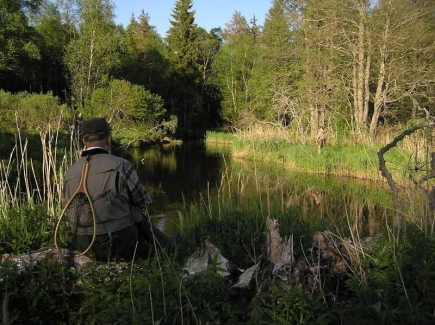
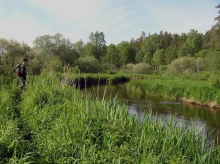
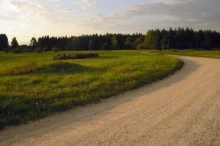
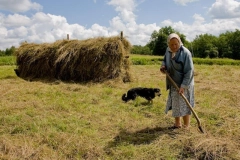
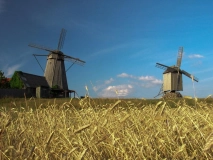
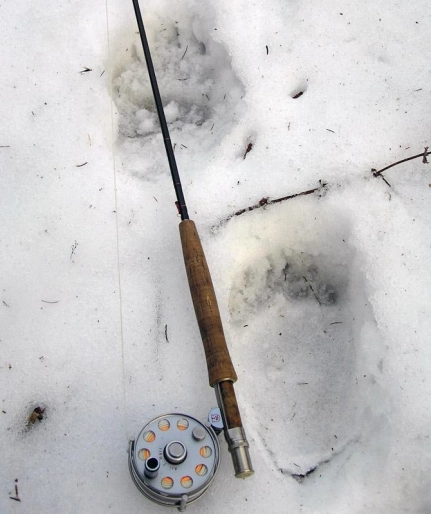
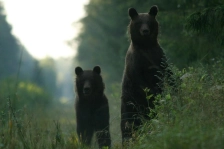
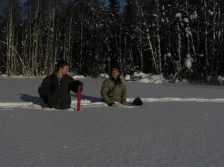
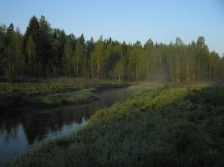
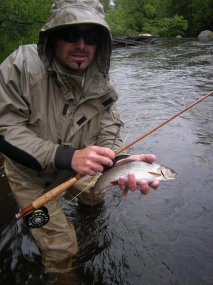
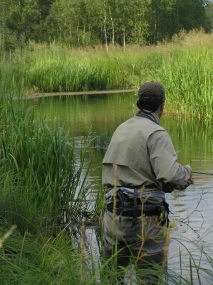
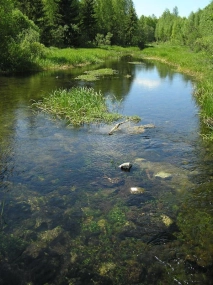

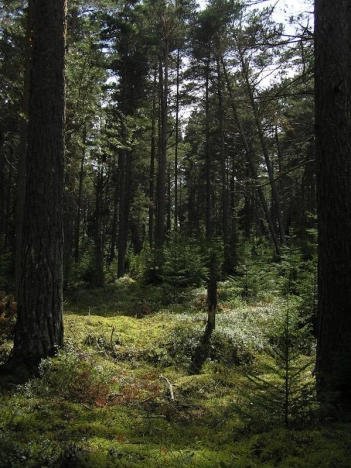
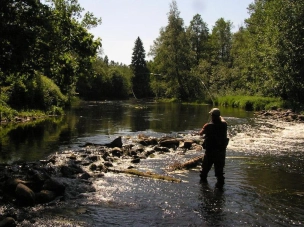
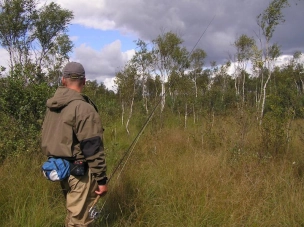
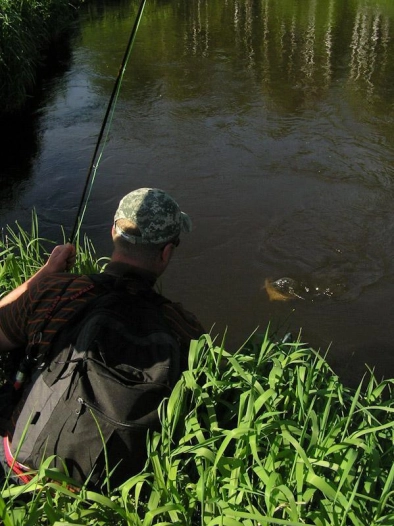


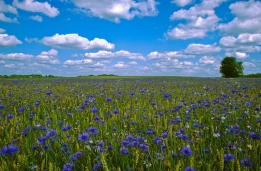

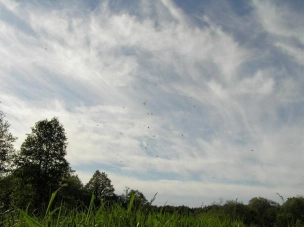
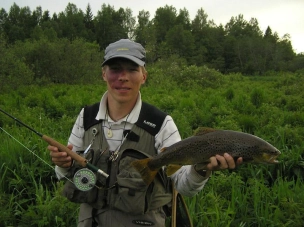
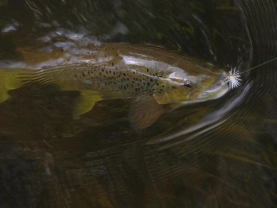
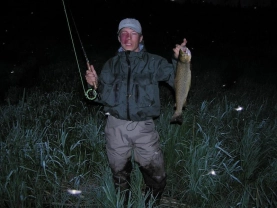
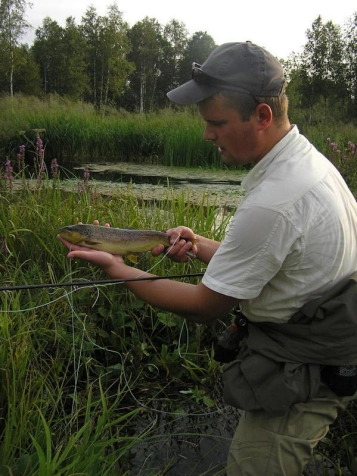
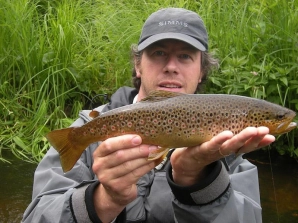
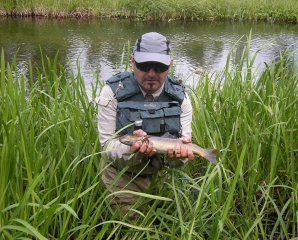
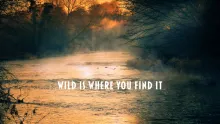
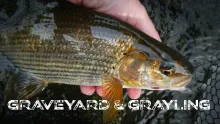
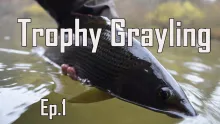
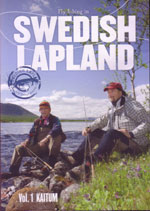
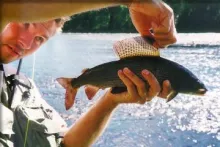


Sry I forgot to fill
Sry I forgot to fill in name and email.
Hi!
I'm a Erasmus s
Hi!
I'm a Erasmus student and I'm right now in Tallinn. Do you have a tip for a good river that can be reached by bus and a walk?
As I'm student 30 ⬠for a car per day is pretty much for me .
Very interesting one
Very interesting one.
I fish for trout in Russian rivers near Estonian border.
Mayfly hatch is a high time here to. But I haven't fish July caddis hatch yet. Will give it a try.
Definitely it is a thrilling experience to be in the middle of those swamps at night:)
Thanks for sharing.
The estonian nationa
The estonian national river- trout rekord is even then 5kg- 10lb !
Its worth to come but you must to know where to try catch them`s.
sea trout
do people fish for sea trout in Estonia as they do in other neigbouring countries? I